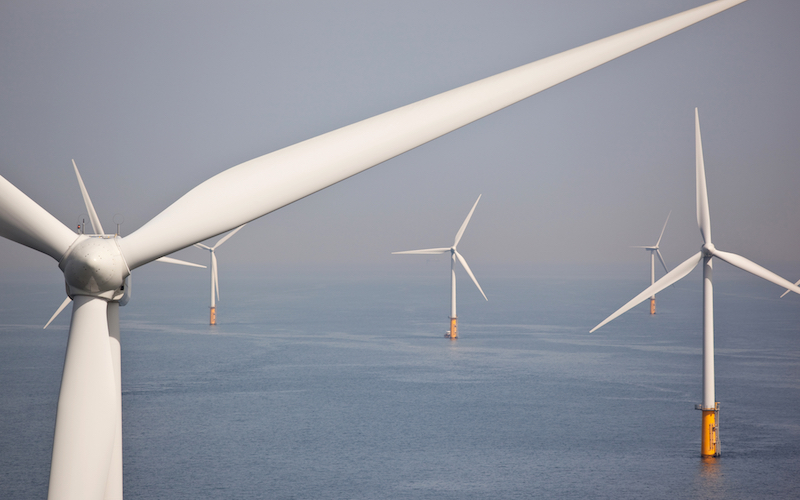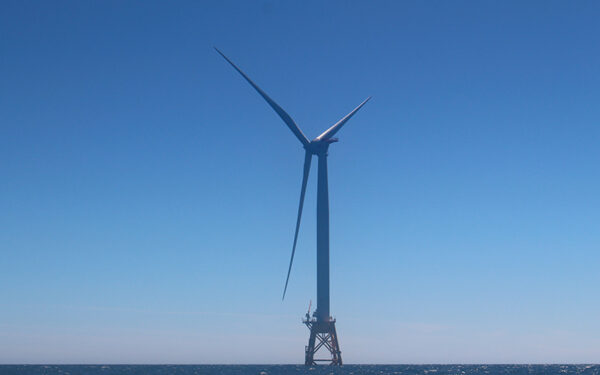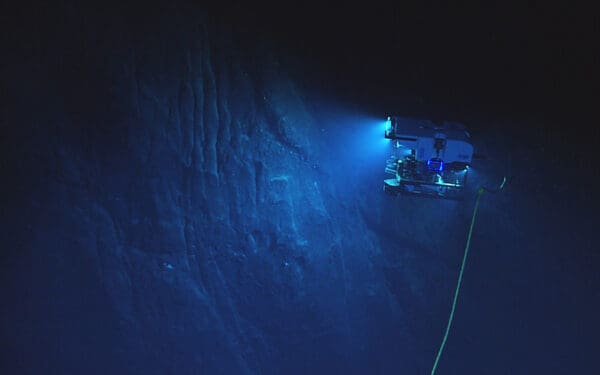
The ocean contributes $352 billion annually to the U.S. economy, and supports 3.1 million jobs nationwide – and it’s continuing to grow. Commercial shipping traffic is increasing at an unprecedented rate. Offshore wind energy is booming off the coasts of Rhode Island and Massachusetts, and small new aquaculture businesses are cropping up left and right.
At the same time, climate change is upon us. The Gulf of Maine is warming faster than nearly all of the world’s oceans. The Trump administration is wasting no time in targeting marine national monuments and sanctuaries. All while we’re fighting back against human-caused risks to endangered species like the North Atlantic right whale.
You get the picture: There’s a lot happening in our oceans right now, and it all matters. With so much at stake, we know that it’s possible to keep our oceans healthy and grow our blue economy – as long as we keep ocean planning at the forefront.
That’s why we’re glad to celebrate one year of the Northeast Ocean Plan in New England!
The Northeast Ocean Plan is Working
The National Ocean Council officially certified the Northeast Ocean Plan on December 7, 2016. With it, our region has committed on every level to be smarter about how we collectively use, manage, and protect our ocean’s resources.
People, businesses, ocean-related industries, and government now have a road map for making ocean-related decisions. This is progress worth celebrating, and it should be held up as a model of collaboration and efficiency.
A key component of the plan in action so far has been the use of the Northeast Ocean Data Portal. I know what you’re thinking: data? Sounds boring. But this is a really big deal. The online portal houses the best available data in one central location, so that, for the first time, decision makers and ocean users can explore a broad and easily accessible spectrum of information to identify potential conflicts, analyze trends, and plan for the future.
Access to the best available data enables the region to capitalize on all the ocean has to offer – food, clean renewable energy, transportation, recreation, and jobs – while being good stewards of our resources and ensuring that the ocean we all depend on is healthy and thriving. Rich Delaney of the Center for Coastal Studies, which conducts whale research in New England, stresses the importance of robust and readily available science that facilitates action.
Another key piece of the plan in action is the commitments made by those with decision-making power (think federal agencies like NOAA and national security entities like the Coast Guard). Their commitments include: keeping the Data Portal up-to-date, involving local stakeholders in decisions that impact coastal communities, and collaborating with other decision makers at the state and federal levels.
Over time, the use of the Northeast Ocean Plan will boost the economy, avoid conflicts on the water, preserve New England’s iconic ocean-based industries, and ensure a healthier ocean for all. As these case studies show, the plan is already delivering results.
We’re optimistic that even more positive stories of success will emerge in the coming years as agencies and project developers incorporate the Northeast Ocean Plan into their daily activities.
What’s Next for the Ocean Plan: Identifying and Safeguarding Ecological Treasures
Protection of the ocean and coastal ecosystems is one of the foremost goals of the Northeast Ocean Plan. Over the last year, CLF has participated in ongoing work around identifying ‘important ecological areas’ that are key to the health of our ocean. This is a critical task for fully implementing the Ocean Plan. With these areas identified, decision makers will be able to evaluate the location and presence of ecologically sensitive zones both before and while making decisions about where to site projects and when to work on them. Using this information will help users avoid harm to the marine life, habitats, or ecological activities present in certain areas.
Areas identified as important could include those with high productivity and biological diversity; spawning, breeding, and feeding grounds; rare or vulnerable marine resources; migratory corridors; and high volumes of marine life.
Wendy Lull, in her time as president of Seacoast Science Center in Rye, NH, has emphasized the importance of protecting migratory corridors. Her story of Tofu, a whale tragically killed by a commercial shipping vessel, is a compelling example of why more coordination is so important. Had the shipping route been just a mile in a different direction, it would have made all the difference for Tofu. The Northeast Ocean Plan makes this information available and allows for better decisions to be made.
Progress has been made this year in moving this work forward, and much more work remains. We’ll continue to push for this to remain a top priority. Ultimately, decisions made with the ecosystem in mind will help the ocean thrive and build resiliency from the impacts of climate change.
Engaging Local Voices
The Northeast Ocean Plan should support the needs of New England’s people, communities, ocean habitats, and marine wildlife. To ensure ocean management happens from the ground up, stakeholders have been involved in every step of the process, from providing input during the years-long development of the plan to giving feedback on the draft plans – and now, as the plan is used in decision making and project development.
To ensure this happens smoothly and consistently, the Plan outlines best practices for decision makers to follow to give local stakeholders a place at the table. These best practices include identifying and talking with coastal communities that may be impacted by a project at hand, and incorporating stakeholders’ feedback into their project plans. Mary Horrigan of New England Science and Sailing in Stonington, CT, strives to educate people to be informed ocean users and keep apprised of ocean-related projects in the works nearby. The Northeast Ocean Plan helps facilitate a two-way conversation so everyone involved is informed and has input in the process.
As more new projects are proposed, we’ll monitor how decision makers are incorporating these best practices. We’ll also look for ways to support their efforts and hold them accountable to using the information available to them to protect the ocean and involve local stakeholders.
Regional Strength Prevails
The Northeast Ocean Plan is New England’s plan. Largely crafted by New Englanders, advocated for by New Englanders, and ultimately implemented by many who call this region home – New England’s values are embedded within this plan.
Today we’re working to make sure that, no matter what happens in Washington, D.C., the Northeast Ocean Plan sets the standard for managing our ocean resources. No matter the challenges we face, our region knows how to come together and make things happen, especially when it comes to caring for our ocean.
As we head into year two, we celebrate the success of our regional strength and look forward to the ways our economy, our coastal communities, and future generations will benefit from the Northeast Ocean Plan.



